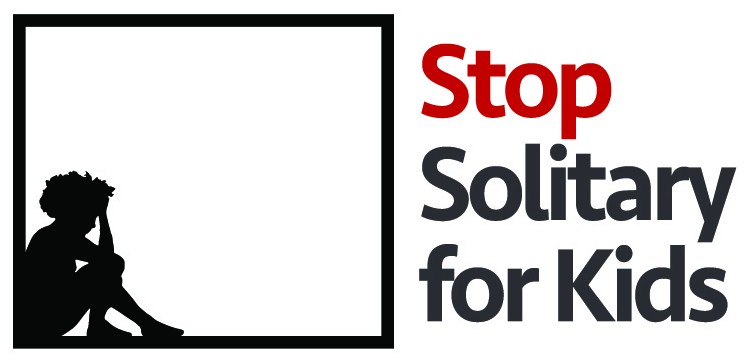JOURNAL ARTICLES (alphabetical order)
An Analysis of the Deterrent Effects of Disciplinary Segregation on Institutional Rule Violation Rates, Criminal Justice Policy Review, Joseph Lucas, Matthew Jones, March 2017.
The results of this study on a cohort of adult males in Oregon prisons indicates that disciplinary segregation was not a significant predictor of subsequent institutional misconduct. The findings also indicate that the experience of disciplinary segregation does not reduce subsequent prison inmate misconduct and therefore suggest that it may not be an effective institutional practice.
Assessing the Impact of Time Spent in Restrictive Housing Confinement on Subsequent Measures of Institutional Adjustment among Men in Prison, Criminal Justice and Behavior Journal, Ryan Labrecque of Portland State University, 2019.
This study examines how time spent in restrictive housing impacts “subsequent measures of institutional adjustment among men in prison.” The author found that spending time in restrictive housing had no meaningful impact on a person’s future misconduct—essentially, that it did not reduce future problematic behavior. The study also found that the amount of time spent in restrictive housing did have a small but negative effect on future placements in restrictive housing. Access to the full text of the article is limited due to copyright
Banishing Solitary: Litigating an End to the Solitary Confinement of Children in Jails and Prisons. New York University Journal of Law and Social Change, Ian Kysel, November 2015
Beyond Rehabilitation: Constitutional Violations Associated with the
Isolation and Discrimination of Transgender Youth in the Juvenile Justice System. Boston College Law Review, vol. 58, no. 1, Marrett, Sonja, 2017.
Children and Solitary Confinement: A Call to Action. Pediatrics, 137(5), Owen, M., & Goldhagen, J., 2016
Children in Isolation: The Solitary Confinement of Youth. Wake Forest Law Review, Tamar Birckhead, Spring 2015
Do No Harm: The Enhanced Application of Legal and Professional Standards in Protecting Youth from the Harm of Isolation in Youth Correctional Facilities. Children’s Legal Rights Journal, Kim Brooks Tandy, January 2014
The Effect of Solitary Confinement on Institutional Misconduct: A Longitudinal Evaluation. Ryan Labrecque, PhD diss., University of Cincinnati 2015
This dissertation provides a longitudinal evaluation of the effect of solitary confinement on institutional misconduct in a sample adult inmates in Ohio. The results of this study indicate that solitary did not have any significant effect on the prevalence or incidence of subsequent violent, nonviolent, or drug misconduct in institutions.
The Effect of Supermaximum Security Prisons on Aggregate Levels of Institutional Violence, Criminology Vol. 41, Issue 4, Chad Briggs, Jody Sundt, Thomas Castellano, 2006
The Eighth Amendment Evolves: Cruel and Unusual Punishment Through the Lens of Childhood and Adolescence. University of Pennsylvania Journal of Law and Social Change, Marsha Levick, Jessica Feierman, Sharon Messenheimer Kelley, Naomi Goldstein, 2012
Ending Solitary Confinement of Youth in California. Loyola University School of Law, Children’s Legal Rights Journal, Vol. 39, Issue 1, Sue Burrell and Ji Seon Song, March 2019.
Exploring the Effect of Exposure to Short-Term Solitary Confinement Among Violent Prison Inmates, Journal of Quantitative Criminology, Vol. 32, Issue 1, Robert Morris, March 2016
The Harmful Use of Isolation in Juvenile Facilities: The Need for Post Disposition Representation. Washington University School of Law Journal of Law and Policy, Sandra Simkins, Marty Beyer, Lisa Geis, January, 2012
How Solitary Confinement Hurts the Teenage Brain. The Atlantic, June 30, 2014, Laura Diman.
Juvenile Solitary Confinement as a Form of Child Abuse, Journal of the American Academy of Psychiatry and the Law, 45(3), 350-357, Andrew Clark, 2017
Lonely Too Long: Redefining and Reforming Juvenile Solitary Confinement, Fordham Law Review, 85(2), 845-876, Jessica Lee, 2016
Mental Health Care of Detained Youth and Solitary Confinement and Restraint Within Juvenile Detention Facilities. Child and Adolescent Psychiatric Clinics of North America, 25(1), 71-80, Whitley, K., & Rozel, J. S., 2016
Psychiatric Effects of Solitary Confinement. Journal of Law and Policy, Stuart Grassian, 2016
Reducing the Use and Impact of Solitary Confinement in Corrections, International Journal of Prisoner Health, Vol. 13 Issue: 1, pp.41-48, Cyrus Ahalt, Craig Haney, Sarah Rios, Matthew P. Fox, David Farabee, Brie Williams, 2017
Rethinking Solitary Confinement for Juveniles, National Conference of State Legislatures, Vol. 24, No. 20, 2016
Restricting the Use of Solitary Confinement, Annual Reviews of Criminology 1:1, 285 – 310, Craig Haney, 2018
Solitary confinement placement and post-release mortality risk among formerly incarcerated individuals: a population-based study, The Lancet Public Health, Vol. 5, Issue 2, Christopher Wildeman, Lars H Andersen (Feb. 2020)
Stop Solitary for Kids: The Path Forward to End Solitary Confinement of Children. Protecting Children against Torture in Detention: Global Solutions for a Global Problem, American University Washington College of Law’s Center for Human Rights & Humanitarian Law: Anti-Torture Initiative (2017). Download the entire publication here.
This article describes movement towards ending solitary confinement for youth in the United States within an international context, and draws lessons for future reform. It includes work done at the facility level, through legislation, litigation, and policy change, as well as significant federal support in recent years.
